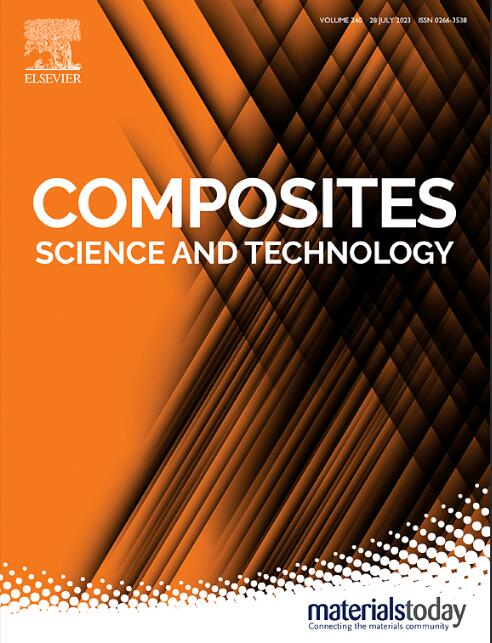基于碳纳米管的纳米复合温度传感器在玻璃化转变范围内传感能力的热电耦合研究
IF 8.3
1区 材料科学
Q1 MATERIALS SCIENCE, COMPOSITES
引用次数: 0
摘要
与室温传感性能不同,在宽温度测量范围内的传感能力往往会遇到玻璃化转变温度。对于轻量化碳纳米管复合材料温度传感器(CNCTS)来说,这仍然是一个关键问题。本研究提出了一种新的热电耦合均匀化理论来研究这一现象。首先,对波浪型和弯曲型碳纳米管采用等效方案。考虑了热膨胀和变范围跳变,得到了与温度相关的电本构关系。然后,在温度相关的隧穿距离和电子迁移率条件下,推导了界面层的隧穿效应。基于不可逆热力学,确定了玻璃化转变过程的渐进演化。接下来,利用分层均匀化方案来评估复合材料的温度依赖性电导率和传感能力。在玻璃化转变范围内推导出一个温度依赖的渗透阈值。在此基础上,通过实验标定了不同碳纳米管体积分数下的温度传感能力。揭示了在低碳纳米管体积分数下可以获得高的温度传感容量绝对值。研究还表明,碳纳米管的温度传感能力可以通过碳纳米管的长宽比、波纹形和热膨胀等微观结构参数来调节。该研究可为超灵敏温度传感器在玻璃化转变范围内的微结构优化提供指导。本文章由计算机程序翻译,如有差异,请以英文原文为准。
Thermoelectrically coupled investigation on the sensing capacities of CNT-based nanocomposite temperature sensor across the glass-transition range
Unlike the room-temperature sensing performance, the sensing capacities over a wide temperature measuring range tend to encounter the glass transition temperature. This remains a critical issue for the lightweight CNT-based nanocomposite temperature sensors (CNCTS). In this research, a novel thermoelectrically coupled homogenization theory is developed to investigate this phenomenon. First, an equivalent scheme is adopted for the wavy and bending CNTs. The temperature-dependent electric constitutive relations are obtained with consideration of thermal expansion and variable range hopping. Then, the tunneling effect at the interphase is derived under the temperature-dependent tunneling distance and electron mobility. The progressive evolution of glass-transition process is also determined based on the irreversible thermodynamics. Next, a hierarchical homogenization scheme is utilized to evaluate the temperature-dependent conductivity and sensing capacities of the composite. A temperature-dependent percolation threshold is derived across the glass-transition range. On this basis, the predicted temperature sensing capacities are calibrated with experiments under various CNT volume fractions. It is disclosed that the high absolute values of temperature sensing capacities can be obtained at a low CNT volume fraction. It is also demonstrated that the temperature sensing capacities of CNCTS can be tuned by the microstructural parameters, including CNT aspect ratio, waviness configuration and thermal expansion. This research can provide guidance for optimizing the microstructure of extremely sensitive temperature sensor across the glass-transition range.
求助全文
通过发布文献求助,成功后即可免费获取论文全文。
去求助
来源期刊

Composites Science and Technology
工程技术-材料科学:复合
CiteScore
16.20
自引率
9.90%
发文量
611
审稿时长
33 days
期刊介绍:
Composites Science and Technology publishes refereed original articles on the fundamental and applied science of engineering composites. The focus of this journal is on polymeric matrix composites with reinforcements/fillers ranging from nano- to macro-scale. CSTE encourages manuscripts reporting unique, innovative contributions to the physics, chemistry, materials science and applied mechanics aspects of advanced composites.
Besides traditional fiber reinforced composites, novel composites with significant potential for engineering applications are encouraged.
 求助内容:
求助内容: 应助结果提醒方式:
应助结果提醒方式:


